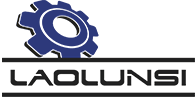Understanding Spur Gear Cutting Machines: Key Insights for Industry Professionals
Spur gear cutting machines play a vital role in the manufacturing process of gears, particularly in the production of spur gears, which are fundamental components in various mechanical systems. These machines are designed to shape and refine gear teeth, ensuring precision and efficiency in the final product. Understanding the intricacies of spur gear cutting machines can greatly benefit profession
At the core of spur gear cutting is the process of material removal, which can be achieved through various methods depending on the machine type and the desired specifications. Common techniques include hobbing, shaping, and milling. Each method offers unique advantages; for instance, hobbing is favored for its speed and ability to produce multiple gears simultaneously, while shaping provides more control over tooth profiles.
Spur gear cutting machines are available in several configurations, ranging from manual to fully automated systems. Manual machines require skilled operators to guide the cutting process, which can be beneficial for small-scale operations or specialized gear production. Conversely, CNC (Computer Numerical Control) machines offer high precision and repeatability, making them ideal for large-scale manufacturing where consistency is paramount.
One critical aspect of spur gear cutting machines is their capacity to handle different materials. Gears can be constructed from a variety of materials, including metals such as steel and aluminum, as well as plastics. The choice of material influences not only the cutting process but also the final gear's performance attributes, such as strength, weight, and resistance to wear.
Additionally, the configuration of the gear itself, such as the number of teeth, pitch, and pressure angle, is essential in determining the most suitable cutting method and machine setup. Understanding these parameters allows manufacturers to optimize their production process and ensure that the gears meet specific engineering requirements.
Moreover, advancements in technology have led to the development of sophisticated software that assists in the design and simulation of gear cutting processes. These tools can help manufacturers visualize the end product before the actual cutting begins, reducing material waste and improving overall efficiency.
In conclusion, spur gear cutting machines are indispensable in the gear manufacturing industry. By mastering the various cutting methods, machine types, and material considerations, industry professionals can enhance their production capabilities and contribute to the development of high-quality gear systems. As the demand for precision and efficiency grows, staying informed about the latest advancements in spur gear cutting technology will be crucial for maintaining a competitive edge in this dynamic sector.
Recommended Blogs
Understanding Planetary Gear Cutting Machines: A Comprehensive Guide
Planetary gear cutting machines play a vital role in the manufacturing and processing of gears, particularly in the production of high-precision components that are essential in various industries, including automotive, aerospace, and robotics. These machines are specifically designed to create gears with complex geometries, utilizing a unique cutting mechanism that allows for efficient and accura
Unlock Precision: How Gear Machining Centers Enhance Manufacturing Efficiency
Unlock Precision: How Gear Machining Centers Enhance Manufacturing Efficiency Manufacturers today are consistently on the lookout for methods to improve their processes, reduce costs, and enhance product quality. One of the most revolutionary advancements in the industry is the introduction of **gear machining centers**. These specialized machines are not just tools; they are game changers that el
Understanding Hypoid Gear Cutting Machines: A Key to Precision in Gear Manufacturing
Hypoid gear cutting machines are specialized tools designed for the production of hypoid gears, which are a type of bevel gear that features a unique design allowing for smoother operation and greater load capacity. These gears are increasingly utilized in various applications, particularly in automotive and aerospace industries, where precision and reliability are paramount. The cutting process e







